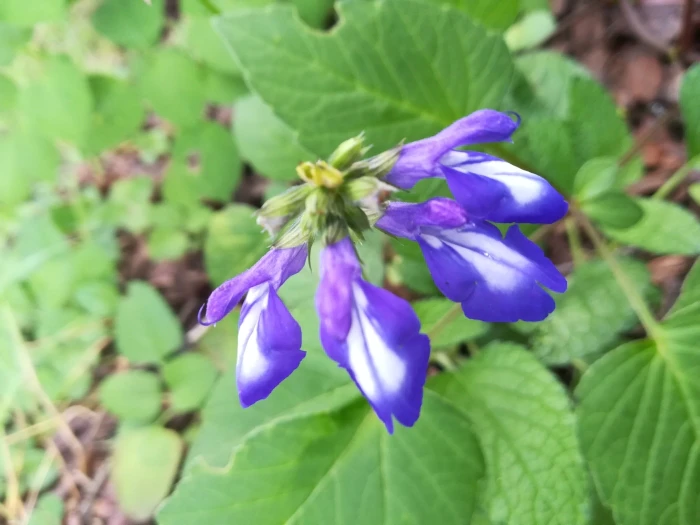Mexican Sage
(Salvia prunelloides)
Mexican Sage (Salvia prunelloides)
/
/

© Erick Vélez Sánchez
CC BY 4.0
Image By:
© Erick Vélez Sánchez
Recorded By:
Copyright:
CC BY 4.0
Copyright Notice:
Photo by: © Erick Vélez Sánchez | License Type: CC BY 4.0 | License URL: http://creativecommons.org/licenses/by/4.0/ | Uploader: erickaceae_98 | Publisher: iNaturalist |

























Estimated Native Range
Climate Requirements for Mequon, Wisconsin
| This Plant | Your Site | Plant Suitability for Your Location | ||
|---|---|---|---|---|
| • Precipitation | 13" - 95" | 31" | Your precipitation may be too high for this plant. | Too high |
| • High Temp. | 54°F - 98°F | 81°F | Your summer temperatures are normal for this plant. | Excellent |
| • Low Temp. | 23°F - 62°F | 11°F | Your winter temperatures may be too cold for this plant | Too cold |
This plant may not grow well at your location - your precipitation is too high.
Summary
Salvia prunelloides, commonly known as Mexican Sage, is an herbaceous perennial native to the highland meadows and pine-oak forests in the Mexican states of Puebla and Mexico State. It is a small plant that spreads through underground runners, forming a low mat of foliage. The lax stems typically grow under a foot long, with small, trowel-shaped leaves that emit a faint hay-like aroma when crushed. The plant flowers sporadically, producing attractive periwinkle-blue flowers in tight whorls at the end of the inflorescence, which can add a splash of color to the garden throughout the growing season.
Mexican Sage is valued for its delicate appearance and its ability to thrive in shaded or semi-shaded areas, making it an excellent choice for woodland gardens, shaded borders, or as an understory plant in larger landscape designs. It prefers well-drained soils and moderate watering, though it can tolerate periods of drought once established. In cultivation, it is appreciated for its ease of maintenance and the subtle fragrance of its foliage. While not commonly reported to have significant pest or disease problems, it can be susceptible to root rot in overly wet conditions.CC BY-SA 4.0
Mexican Sage is valued for its delicate appearance and its ability to thrive in shaded or semi-shaded areas, making it an excellent choice for woodland gardens, shaded borders, or as an understory plant in larger landscape designs. It prefers well-drained soils and moderate watering, though it can tolerate periods of drought once established. In cultivation, it is appreciated for its ease of maintenance and the subtle fragrance of its foliage. While not commonly reported to have significant pest or disease problems, it can be susceptible to root rot in overly wet conditions.CC BY-SA 4.0
Plant Description
- Plant Type: Herb
- Height: 1-1.5 feet
- Width: 2-3 feet
- Growth Rate: Moderate
- Flower Color: Purple
- Flowering Season: Summer
- Leaf Retention: Semi-deciduous
Growth Requirements
- Sun: Full Sun, Part Shade
- Water: Medium
- Drainage: Medium, Fast
Common Uses
Bee Garden, Border Plant, Groundcover, Low Maintenance
Natural Habitat
Native to highland meadows and pine-oak forests in the Mexican states of Puebla and Mexico State
Other Names
Common Names: Creeping Sage
Scientific Names: Salvia prunelloides, Salvia forreri, Salvia glechomifolia, Salvia lentiginosa, Salvia parrasana, Salvia prunelloides f. minor, Salvia reticulata, Salvia rhombifolia, Salvia trichandra
GBIF Accepted Name: Salvia prunelloides